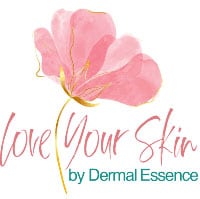DID YOU KNOW?
Just because you have oily skin doesn’t always mean you experience breakouts. Just because you experience breakouts doesn’t always mean you have oily skin. Trying to find an equilibrium to reduce excessive oil flow whilst minimizing the potential for blackheads, pimples and acne can often be a difficult balancing act. Whilst sebum (the skin’s natural oil) often receives a bad rap, it serves a versatile purpose to protect and hydrate the skin. By constantly stripping the skin to remove excess sebum, further oil production, dehydration and inflammation can often result in creating even more skin imbalance and problems.
Breakouts and acne are not just oil issues and can affect any skin type and condition. Dehydration, ineffective cleansing and the use of clogging products can all lead to the build-up of dirt and debris in the pores.
Stripped or excessively oily skin often provides the perfect environment for bacterial proliferation. What follows is the development of pimples, pustules and acne accompanied by diffused redness, inflammation and painful lumps and bumps.
Whilst the temptation is to over-cleanse, strip pick and squeeze oil problematic skins, this type of intervention merely makes the problem worse. Further skin imbalance compounds the frustration and stress experienced by those with breakout-prone conditions.
SKIN FACTS
- Oily and problematic skin is not just for teenagers, over 50% of adults experience mild breakouts and acne at some point.
- All skin types produce sebum, it’s just that oiler skin produces more.
- Sebum production is regulated by testosterone hormones. Sebum is produced by sebaceous glands and is then released via hair follicles onto the skin.
- Sebum is a major constituent of the skin’s barrier function (also known as the acid mantle). This protective layer helps to maintain the skin’s slightly acidic pH.
- The bacteria responsible for pimples and acne is called P. Acnes. It thrives in stripped and alkaline environments.
- P. Acnes bacteria flourishes in anaerobic conditions; especially clogged and congested pores.
- Dirt, dead skin cells, sebum and product residue (such as make-up) accumulate in pores creating congestion and the ideal environment for bacteria to proliferate.
- Over-cleansing or exfoliating, the skin can stimulate further oil production. The skin should never feel tight or ‘squeaky clean’ after cleansing.
CAUSES OF CONDITION
Oily and problematic conditions have three contributing factors that need to be simultaneously addressed in order to provide effective reduction and prevention. These triggers are:
- Increased sebum production
- clogging and congestion within the pores
- bacterial proliferation
Whilst puberty is the primary culprit driving increased sebum production, hormonal variations and influxes at any age can also contribute. These may be fueled by adrenal/pituitary gland imbalances, testicular/ovarian disorders, the use of alkaline of stripping skincare products and certain medications (such as anti-histamines). Sebum production decreases with age, menopause and medications (including the contraceptive pill)
Clogging and congestion within the pore often develop when the skin’s natural exfoliation process becomes impaired.
Despite the common practice of ‘drying out’ oily and breakout-prone conditions this over-stripping slows down or prevents the skin’s renewal cycle. Add clogging ingredients (from wrong skincare or congesting make-up) with excess oil production within the pore, and a plug of debris forms creating the precursor to blackheads, pimples and acne.
Whilst P. Acnes bacteria are naturally present on all skins, it only poses an issue when it multiplies beyond normal levels creating infection, redness and inflammation
Book your consultation here https://booking.clientdiary.com/?bookingsUrl=dermalessence
Check our signature facials here: https://dermalessence.com.au/services/signature-facials/

